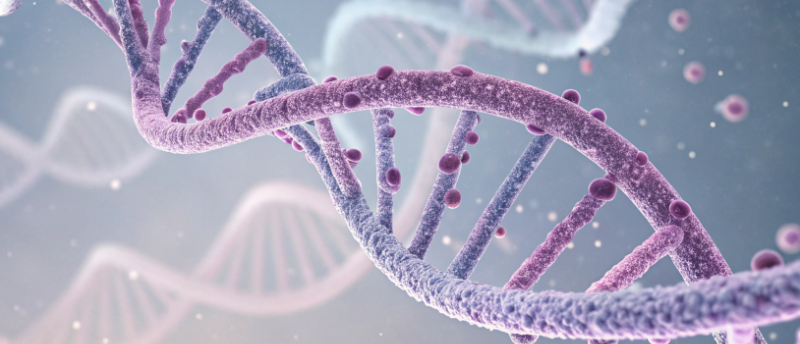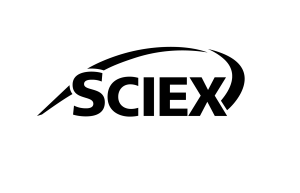Navigating the bioanalytical complexities of oligonucleotide therapeutics

The rapid evolution of oligonucleotide therapeutics has revolutionized modern drug development, offering unprecedented opportunities to target previously “undruggable” diseases through precise gene regulation mechanisms. As these synthetic nucleic acid drugs advance from laboratory concepts to clinical realities, the bioanalytical challenges they present have become increasingly complex and critical to therapeutic success.
In this interview, Eshani Galermo explores the current landscape of oligonucleotide bioanalysis and provides valuable perspectives on the technological advances and emerging approaches that are shaping the future of oligonucleotide quantitation and characterization in pharmaceutical development.

Eshani Galermo
Staff Scientist, Pharma/Biopharma Quant Lead, Global Scientific Marketing
SCIEX (CA, USA)
Eshani Nandita Galermo earned her doctoral degree in Analytical Chemistry from the University of California, Davis (USA), where her research focused on advanced mass spectrometry techniques for analyzing carbohydrate structures. During this time, she collaborated with leading food companies to drive impact.
Eshani joined SCIEX in 2020, bringing a strong foundation in bioanalytical science. Prior to SCIEX, she contributed to several bioanalytical laboratories, where she specialized in developing and validating LC-MS assays for both biologics and small molecules.
At SCIEX, Eshani leads the technical marketing strategy for biopharma quantitation and pharmaceutical applications. Her role bridges science and strategy, enabling global teams and customers to adopt innovative workflows for quantitative bioanalysis. She is passionate about translating complex analytical challenges into accessible solutions, and she frequently collaborates across research and development, commercial, and scientific teams to drive thought leadership in the field.
-
- Oligonucleotide therapeutics have gained significant momentum in recent years. Could you share your perspective on the current landscape and why accurate bioanalysis is so critical for advancing this field?
- What key factors should guide the choice between triple quadrupole and high-resolution mass spectrometry for oligonucleotide analysis? Are there specific applications where one clearly outperforms the other?
- Ion-pair reversed-phase liquid chromatography has been the traditional approach for oligonucleotide analysis, but it comes with several challenges. What are these limitations and how do they impact workflows?
- What advantages does HILIC offer over traditional methods and what challenges still need to be overcome before wider adoption?
- Could you compare the effectiveness of different sample preparation approaches like protein precipitation, solid-phase extraction and hybridization capture for different oligonucleotide classes?
- As oligonucleotide therapeutics become more potent with lower dosing, how can bioanalytical scientists achieve the necessary sensitivity without compromising specificity?
- Looking ahead, what emerging technologies or approaches do you believe will transform oligonucleotide bioanalysis in the coming years?
Oligonucleotide therapeutics have gained significant momentum in recent years. Could you share your perspective on the current landscape and why accurate bioanalysis is so critical for advancing this field?
Oligonucleotide therapeutics are synthetic nucleic acid drugs composed of short DNA or RNA sequences designed to regulate gene expression at the cellular level. They have demonstrated remarkable potential in treating a range of diseases that were previously considered to be “undruggable.” This class of therapeutics encompasses diverse modalities, including antisense oligonucleotides (ASOs), small interfering RNAs (siRNAs), antibody-oligonucleotide conjugates (AOCs), aptamers and others. These molecules can be structurally complex, incorporating various chemical modifications, differing in size, and often conjugated with moieties like GalNAc or lipids to enhance delivery and efficacy. Given this complexity, robust, accurate and sensitive bioanalytical methods are essential for pharmacokinetic and toxicological studies to ensure drug safety and efficacy throughout development.
What key factors should guide the choice between triple quadrupole and high-resolution mass spectrometry for oligonucleotide analysis? Are there specific applications where one clearly outperforms the other?
Triple quadrupole mass spectrometry is widely regarded as the gold standard for quantitative bioanalytical workflows and remains the preferred platform for quantifying oligonucleotides in biological matrices. High-resolution mass spectrometry (HRMS) has been employed primarily for sequence-based characterization and metabolite identification of oligonucleotides. However, with the advent of advanced HRMS technologies offering enhanced detection sensitivity, broader linear dynamic range, and low mass error, these systems are increasingly being adopted for quantitative applications as well. In addition to improved system performance, the high resolution of HRMS enables reduced background noise and improved signal-to-noise ratios, facilitating more sensitive quantitation.
Additionally, oligonucleotides are polyanionic molecules characterized by a negatively charged phosphate backbone, which readily interacts with cations across a broad range of charge states. These interactions can reduce ionization efficiency, complicate spectral interpretation, and lead to charge state overlap—making it challenging to resolve and accurately quantify target analytes. In such cases, HRMS has emerged as a powerful tool for oligonucleotide analysis, particularly in the presence of metabolites and impurities, due to its ability to distinguish between multiple charge states in complex samples.
Ion-pair reversed-phase liquid chromatography has been the traditional approach for oligonucleotide analysis, but it comes with several challenges. What are these limitations and how do they impact workflows?
The use of ion-pairing (IP) agents in LC systems often leads to contamination of LC pumps, necessitating dedicated systems for oligonucleotide analysis. Not only the LC system but also the MS system can be affected, as IP reagents tend to accumulate and cause contamination. This results in instrument downtime and requires extensive cleaning. This can become highly problematic when the same system is used for multiple assays. Additionally, the use of mobile phase modifiers, which are often essential for oligonucleotide separation, can become prohibitively expensive over time.
What advantages does HILIC offer over traditional methods and what challenges still need to be overcome before wider adoption?
Hydrophilic interaction liquid chromatography (HILIC) workflows have recently gained significant interest as an alternative to IP methods for oligonucleotide analysis. Due to the hydrophilic nature of HILIC, oligonucleotides are readily retained on the stationary phase (such as amide) without the need for IP reagents or additional mobile phase modifiers. This simplifies the workflow and minimizes contamination risks to both the LC and MS systems, resulting in increased instrument uptime and reduced maintenance requirements. Despite its advantages, HILIC-based approaches still face limitations in sensitivity, which can impact the detection of low-abundance oligonucleotides.
Could you compare the effectiveness of different sample preparation approaches like protein precipitation, solid-phase extraction and hybridization capture for different oligonucleotide classes?
Protein precipitation is a simple and rapid sample preparation technique that can be effective for oligonucleotide screening and particularly when working with less complex biological matrices. However, due to its non-selective nature, it may not sufficiently remove all interfering components. Recent research has explored the use of ammonia as a strategy to enhance the selective recovery of target oligonucleotides from complex biological matrices, offering a cleaner and more efficient sample preparation approach.
Solid-phase extraction leverages the physicochemical properties of oligonucleotides to separate them from the background matrix. The stationary phase selectively retains the target analyte while washing away background components. This approach is widely used in oligonucleotide analysis due to the availability of diverse sorbent chemistries (reversed-phase, weak/strong anion exchange, and mixed-mode phases). Solid-phase extraction offers high recovery and effective removal of salts, proteins, lipids and other matrix interferences, although method optimization is typically required to achieve optimal performance.
Hybridization capture-based cleanup offers a highly specific and targeted approach. In this method, a complementary DNA probe is immobilized on magnetic beads to selectively isolate the target oligonucleotide. This technique offers excellent selectivity and is particularly effective in removing background compounds, metabolites and impurities, thereby enabling more sensitive quantitation. However, the success of this method depends on the design of the probe, which must be tailored to the target sequence and can be costly to develop.
As oligonucleotide therapeutics become more potent with lower dosing, how can bioanalytical scientists achieve the necessary sensitivity without compromising specificity?
One of the primary challenges in analyzing highly potent oligonucleotide therapeutics is achieving accurate and sensitive quantitation while effectively distinguishing the target analyte from co-existing metabolites and impurities. This requires a carefully tailored analytical strategy that considers the nature of the oligonucleotide and the complexity of the biological matrix. Optimized sample preparation techniques are essential, whether through selective capture or extraction methods. Chromatographic strategies (microflow or nanoflow LC) for enhanced sensitivity, or optimized separation techniques (ion-pair reversed-phase or HILIC), are additional strategies that can be considered to improve quantitative performance. Coupling these approaches with the appropriate mass spectrometry platform, such as triple quadrupole mass spectrometry for targeted quantitation or HRMS for comprehensive analysis of potential metabolites and impurities, enables robust and reliable analysis.
Looking ahead, what emerging technologies or approaches do you believe will transform oligonucleotide bioanalysis in the coming years?
Emerging sample preparation technologies, such as hybridization-based techniques, are gaining traction due to their high specificity for the target oligonucleotide over background matrix components. Additionally, as HRMS continues to advance (with sensitivity comparable to high-end triple quadrupole mass spectrometers, along with greater versatility), it presents a promising platform for both quantitative and qualitative assay development.
Further reading:
- Quantitation of GalNAc modified and unmodified oligonucleotides in rat plasma
- Ultra-sensitive quantification of GalNAc- and lipid-conjugated siRNA using trap-and-elute microflow LC
- A robust and highly sensitive direct inject microflow LC-MS/MS method for antisense oligonucleotide quantification in plasma
- Metabolite ID and relative quantification of oligonucleotides in plasma
The opinions expressed in this interview are those of the interviewee and do not necessarily reflect the views of Bioanalysis Zone or Taylor & Francis Group.
In association with:

